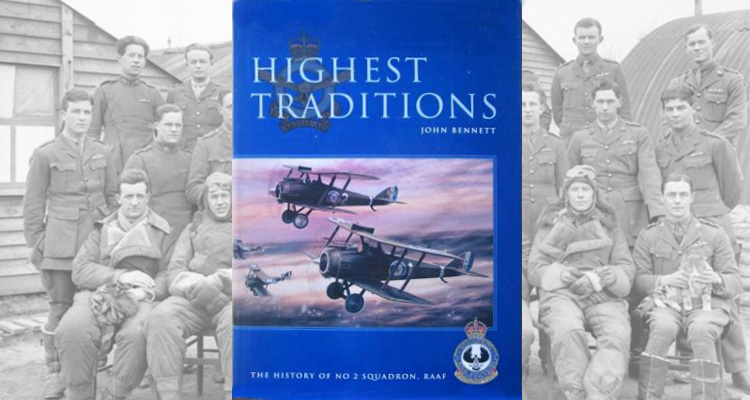Highest Traditions: The History of No. 2 Squadron, RAAF by John Bennett, AGPS Press, 1995
Another recent unit history of a more comprehensive nature is Highest Traditions: The History of No. 2 Squadron, RAAF,by John Bennett (Australian Government Publishing Service, Canberra, 1995, approximately $34 U.S.). Organized in Egypt in1916 as part of the newly formed Australian Flying Corps, No. 2 Squadron made its combat debut over the Western Front at the end of September 1917. Initially equipped with de Havilland DH-5s and later, from January 1918, with SE-5a’s, No. 2Squadron AFC was not as famous as No. 56 Squadron but produced its share of aces, including Francis R. Smith, who had16 victories, and Frank Alberry, who scored seven despite his having lost a leg as an infantryman two years earlier.
In contrast to Revell, author Bennett traces No. 2 Squadron’s activities beyond World War I through the interwar years and World War II, when it successively operated Avro Ansons, Lockheed Hudsons, Bristol Beauforts and North American B-25 Mitchells against the Japanese in the South Pacific with the Royal Australian Air Force (RAAF). Also covered in the book are No. 2 Squadron’s operations against Communist insurgents in Malaya in the 1950s and against Indonesian infiltrators in North Borneo between 1963 and 1966, in both cases using the Australian-built version of the English Electric Canberra jet bomber.
Next, Highest Traditions provides a detailed treatment of No. 2 Squadron’s fifth conflict, the Vietnam War, during which it established a peerless reputation for efficiency and bombing accuracy. While No. 2 RAAF’s Vietnam exploits are little known to Americans, including a good many veterans of that war, aviation writer John Bennett is intimately familiar with them–from November 1969 to November 1970, he flew missions from Phan Rang air base as a Canberra bombardier.
Like High in the Empty Blue, Highest Traditions is a labor of love, but its author has also done his research well,interspersing in the text a wealth of personal anecdotes from No. 2 Squadron’s five wars–and thereby seasoning his scholarship with a distinctive Aussie flavor.





